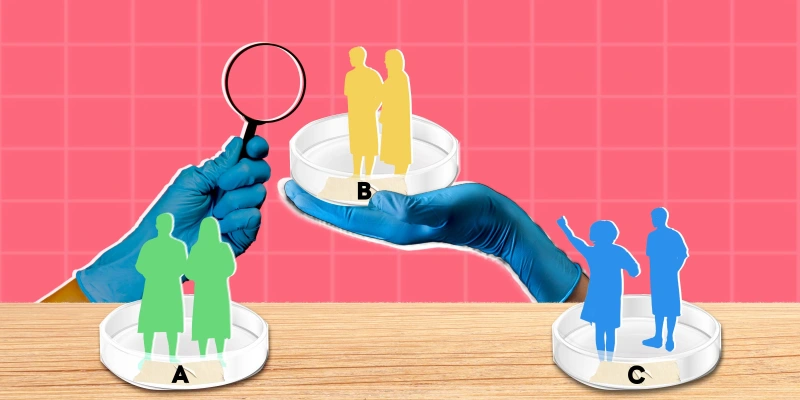What are the highlights that attendees should take away from your presentation?
Nonalcoholic fatty liver disease (NAFLD) is usually an overlooked complication of Type 2 diabetes (T2D) associated with significant economic burden and potentially severe long-term hepatic and extrahepatic outcomes (i.e., cardiovascular disease [CVD], development of T2D, PCOS, sleep apnea and others). This requires endocrinologists and all involved in the care of patients with T2D to understand the complex association between NAFLD and T2D. Early diagnosis and use of available medications for the treatment of diabetes, such as pioglitazone or GLP-1 receptor agonists, can halt disease progression and prevent cirrhosis.
Cardiovascular disease (CVD) is already high in people with T2D and worsened if they have NAFLD. About 70% of patients with T2D have NAFLD, and CVD is the primary cause of death in patients with NAFLD (except when already advanced liver disease). Recognizing and treating cardiometabolic risk factors is important in caring for patients with NAFLD. Patients with obesity and prediabetes are at the highest risk of developing NAFLD, and NAFLD doubles the risk of developing diabetes. These complex interactions call for multidisciplinary teams in caring for people with NAFLD.
We hope that in 2023 the ADA will recommend screening for liver fibrosis in all patients with T2D as about 15-20% have moderate to advanced liver fibrosis (histologically called as having F2 or greater). This can be easily done by using the FIB-4 screening test and elastography or ELF when needed (as explained in the presentation).
Recent guidelines from the American Association of Clinical Endocrinologists (AACE) offer answers to the most pressing aspects of the care for patients with obesity and/or T2D, who are also at the highest risk of cirrhosis (and hepatocellular carcinoma) from NASH.
What is the central question that your presentation tries to answer?
Clinicians must be aware that NAFLD increases the risk of liver cirrhosis, and the risk of T2D and worse macro- and microvascular complications. NAFLD represents a spectrum of liver diseases ranging from a simple accumulation of hepatic triglyceride (known as nonalcoholic fatty liver or NAFL) to its progression to hepatocyte injury and inflammation, known as nonalcoholic steatohepatitis (NASH). In NASH, there is often progression to centrilobular fibrosis (“NASH-fibrosis”) and, ultimately, end-stage liver disease (NASH-cirrhosis). Disease progression is more common in obese patients with T2D. The early detection of NASH is essential, especially as fibrosis affects about 15-20% of patients with T2D and puts them at risk of end-stage liver disease.
Proof of the looming epidemic is that the number of patients with NASH cirrhosis waiting for liver transplantation in the United States has tripled in the last decade, and NASH has become the second indication for liver transplantation. All-cause mortality from NAFLD has increased 15% in the past decade. Mortality increases exponentially with the degree of liver fibrosis.
How do these findings and/or conclusions potentially impact clinical practice?
Recognizing and treating cardiometabolic risk factors is important in the care of patients with NAFLD. Patients with obesity and/or prediabetes or T2D are at the highest risk of developing NASH. Moreover, NAFLD doubles the risk of developing T2D. As NAFLD is associated with the development of T2D and possibly worse diabetic complications (nephropathy, retinopathy), as well as CVD and other metabolic disorders (atherogenic, dyslipidemia, PCOS, sleep apnea, others), these complex interactions call for multidisciplinary teams in the care of people with NAFLD.
It is time also for the ADA to recommend screening for liver fibrosis all patients with T2D as about 15-20% have moderate to advanced liver fibrosis (histologically called as having F2 or greater), and disease progression could be prevented with lifestyle modification that promotes weight loss, best achieved by structured weight loss programs and anti-obesity medications, as well as bariatric surgery when needed.\
What else would you like attendees to know about your presentation?
Early recognition of NAFLD and monitoring for the development of NASH with advanced liver fibrosis in patients with T2D is a new concept for clinicians. However, it is similar to when we started to screen for diabetic nephropathy by measuring albumin in the urine or retinopathy with yearly dilated eye exams. The presence of NASH in a patient with T2D should call for intensive lifestyle modification and promotion of weight loss by any means and to take advantage of antidiabetic medications with proven efficacy to reverse steatohepatitis and progression of liver fibrosis, such as pioglitazone (today an inexpensive generic medication) or GLP-1 receptor agonists.
Dr. Cusi is employed by the University of Florida. He has received grants from From the NIH, Echosens, Inventiva, Novo Nordisk, Poxel, Labcorp, and Zydus. He has served as a consultant to Altimmune, Arrowhead, AstraZeneca, 89Bio, BMS, Lilly, Madrigal, Novo Nordisk, Quest, Sagimet, Sonic Incytes, and Terns.
Image by GoodStudio/Shutterstock







